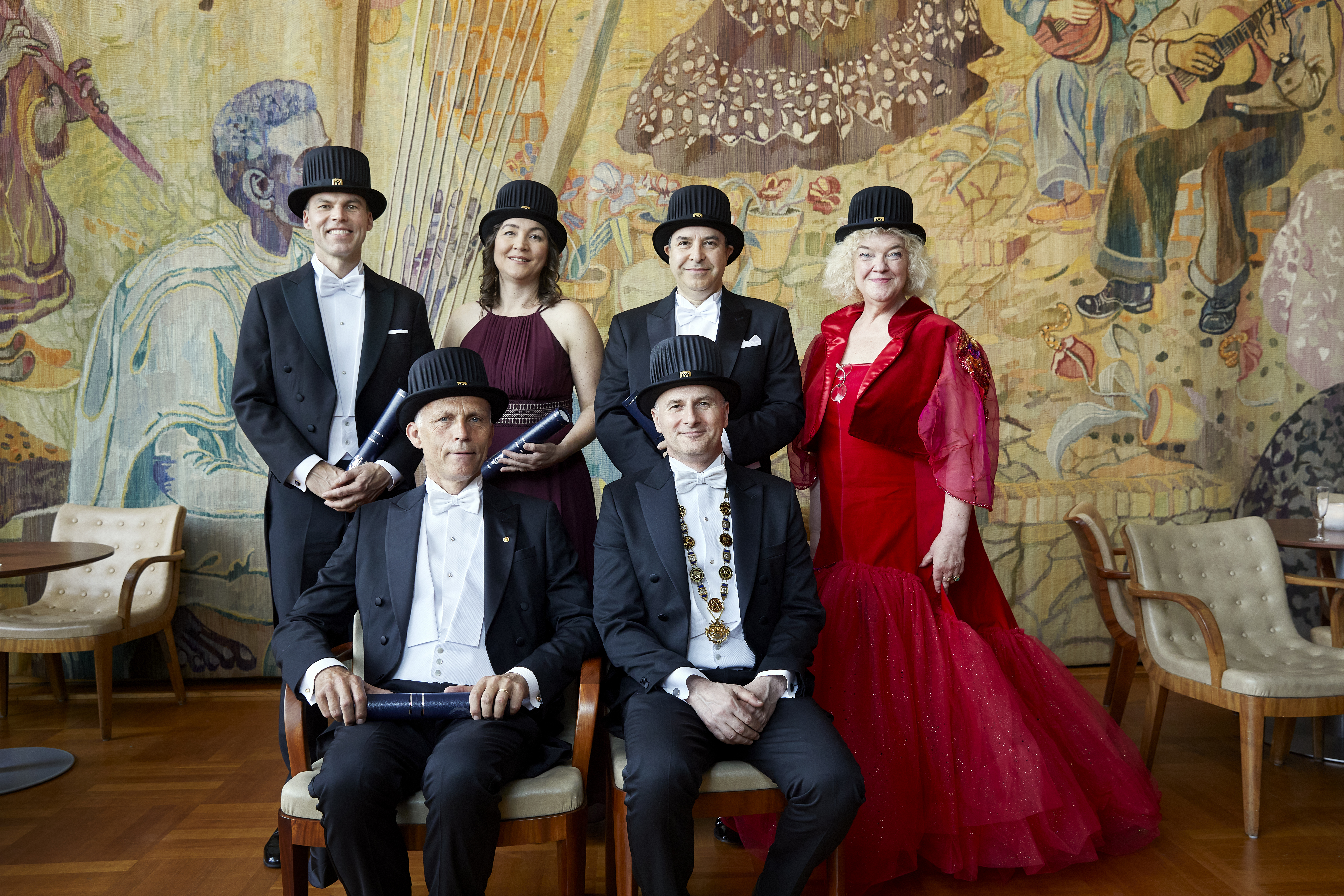
02.06.2025
We are happy to announce that our spokesperson Julia Tjus has been officially named an Honorary Doctor of the Chalmers University of Technology as of May 24, 2025.
This prestigious recognition was awarded during the university’s annual academic celebration in the Gothenburg Concert Hall.
Julia has been honored for her groundbreaking contributions to astroparticle physics. Her pioneering work in neutrino astronomy and cosmic ray research, especially her collaboration with the IceCube Neutrino Observatory, has significantly advanced our understanding of the high-energy universe.
Since her postdoctoral stay in Gothenburg, she has maintained a close connection with Chalmers University. As a Jubilee Professor in 2023 and now as an Associate Professor, she continues to strengthen the strong partnership with Nordic radio and neutrino astronomy.
We also extend our congratulations to the new doctors of Chalmers University, the honorary doctors Babak Hassibi (CalTech), Herre van der Zant (TU Delft), and Marcus Wandt (Saab/Esa), and Chalmers Supervisor of the Year Yinan Yu.
Please also have look at the news articles of Chalmers
and RUB News
Picture:
All honorary doctorates: front: Herre van der Zant, Martin Nilsson Jacobi (President of Chalmers University), back: Marcus Wandt, Julia Tjus, Babak Hassibi, Eva Olsson (Chair of the Faculty Council)
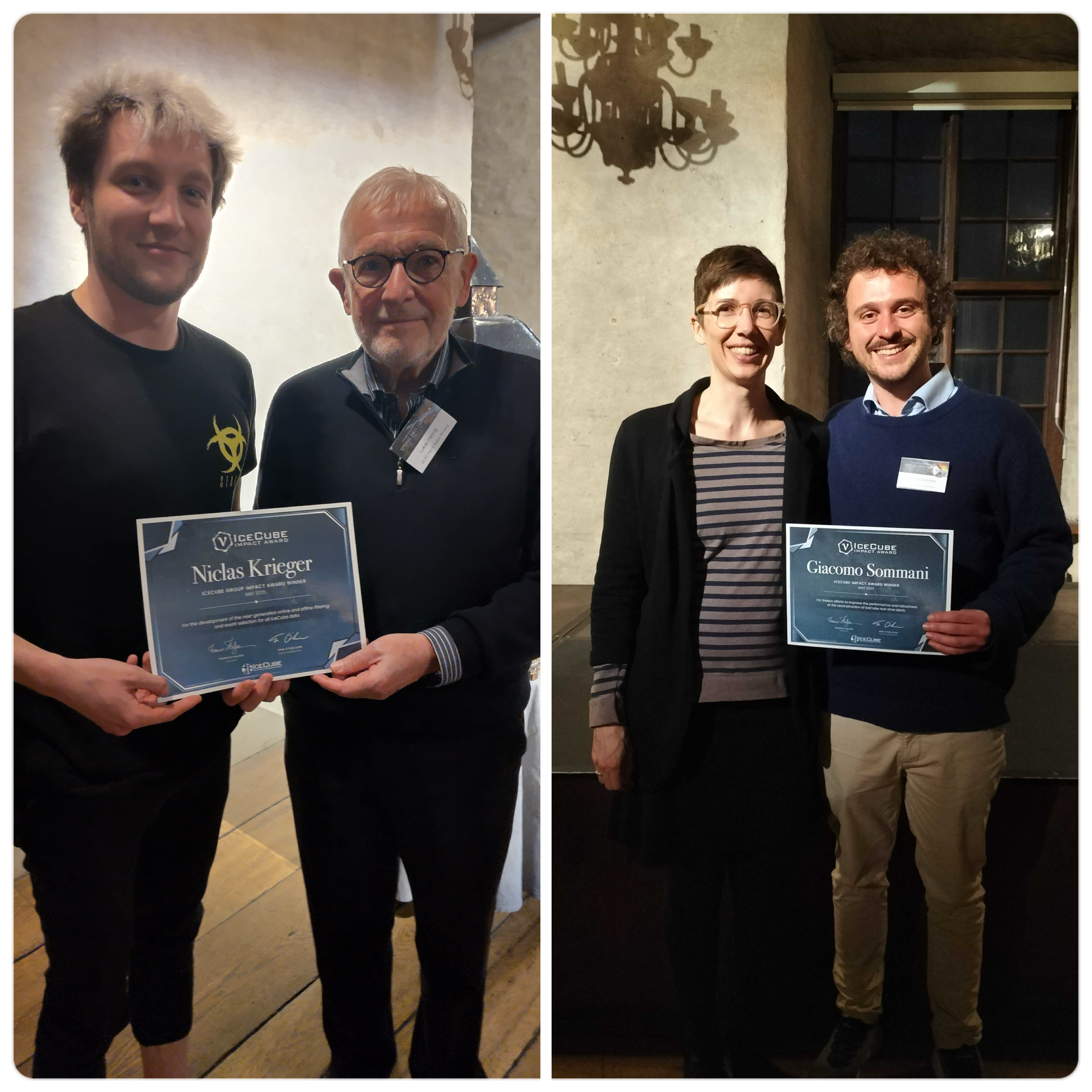
22.05.2025
Congratulations to our SFB1491 members Giacomo Sommani and Niclas Krieger for receiving the IceCube Impact Award 2025!
The IceCube Impact Awards recognize significant contributions to IceCube - the neutrino observatory at the South Pole.
Giacomo received the Individual Impact Award for his outstanding work on the performance and robustness of the reconstruction of IceCube real-time alerts.
Niclas is part of the team that was honoured with the Group Impact Award for the development of the next-generation online and offline filtering and event selection for all IceCube data.
More information on the awards can be found
here
Picture: Niclas (left) and Giacomo (right) with collaborators.
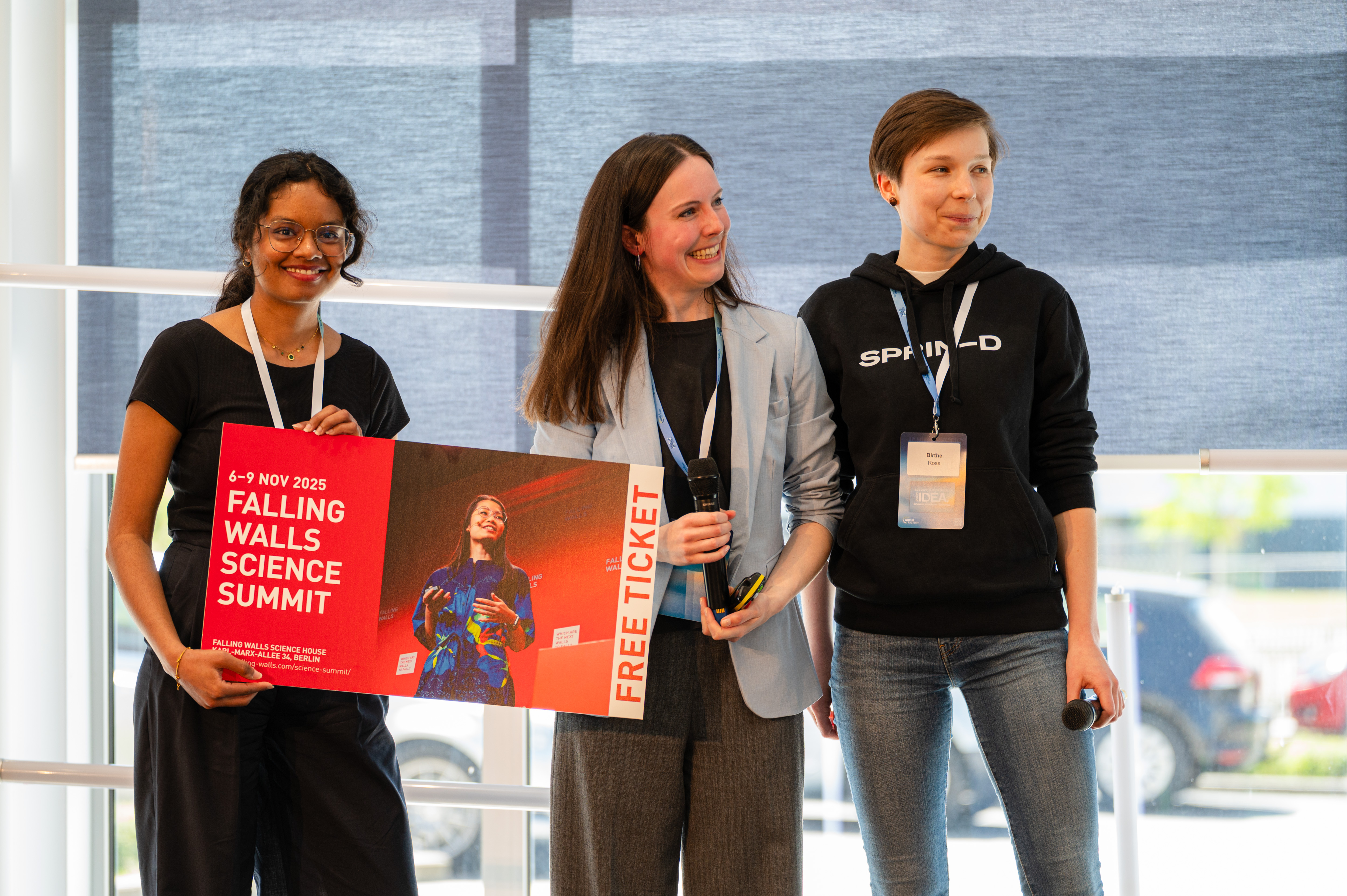
22.05.2025
Congratulations to our new CRC associate and DARK100 postdoc Sruthiranjani Ravikularaman!
Sruthi won the Science Slam at IDEA.2025 — the first Entrepreneurship Day hosted by the Worldfactory Start-up Center (WSC) of Ruhr University Bochum!.
In her winning talk Afraid of the dark? she brilliantly explained the concept of dark matter using the analogy of ghosts. She also discussed the unique dark matter detection experiment of the Dark100 project with PANOSETI telescopes.
The judges praised her ability to address complex challenges in her field with a blend of humor and insight, making her presentation both informative and entertaining.
This award gives Sruthi the unique opportunity to attend the Falling Walls Summit in November in Berlin:
Read more about the IDEA.2025 event here
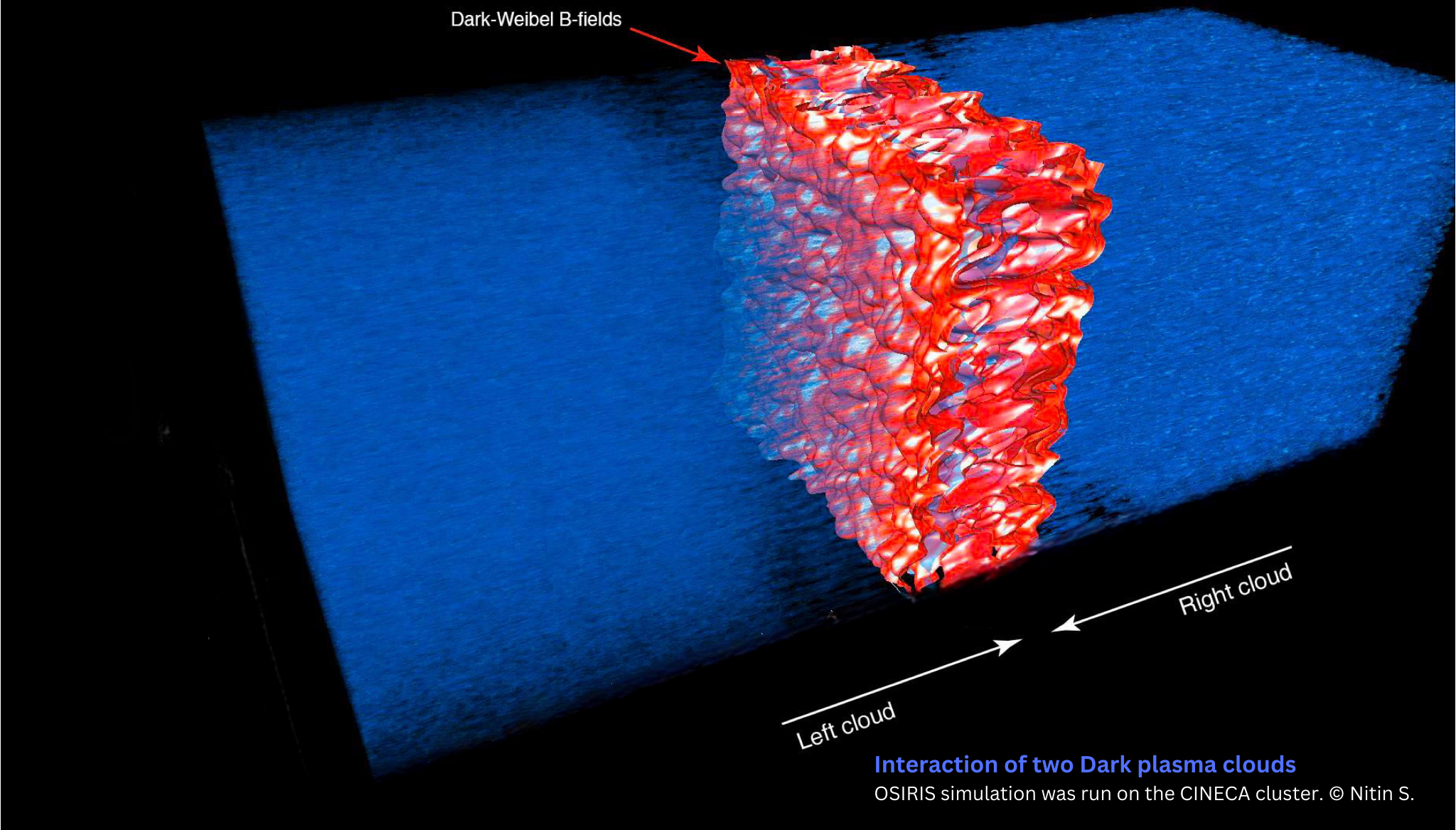
09.05.2025
A recent study by our scientist Kevin Schoeffler, together with his colleagues Nitin Shukla (CINECA High-Performance Computing Department, Italy), and Luis Silva (Universidade de Lisboa, Portugal), has set a strong upper bound on long-range dark matter interactions through plasma physics. The research explores the intriguing possibility that dark matter could be charged under a unique “dark electromagnetism” (dark-EM), causing it to behave like a cold collisionless plasma.
Using advanced simulations, the team discovered that plasma instabilities could lead to significant slowdowns in dark matter dynamics.
Interestingly, astronomical observations of colliding galaxy clusters like the so-called „Bullet Cluster“ only fits to their findings if the interaction strength is extremely weak. As a result, they established a strong upper bound on the dark electromagnetic self-interaction constant.
This new constraint is much stronger than previous limits, suggesting that dark electromagnetic interactions are highly restricted.
This research not only advances our understanding of dark matter but also opens new avenues for further exploration and verification through observational measurements.
Read the full article here:
Can plasma physics establish a significant bound on long-range dark matter interactions?
K. Schoeffler N. Shukla and L. O. Silva, Phys. Rev. D 111, L071701
And please have a look at the popular science article here:
Intergalactic Collision Constrains Dark Electromagnetism
Physics 18, s48
Picture:
Counterstreaming slabs of dark matter plasma, shown in blue, are
slowed down while
interacting with dark magnetic fields, shown in red, which are
generated by kinetic plasma instabilities.
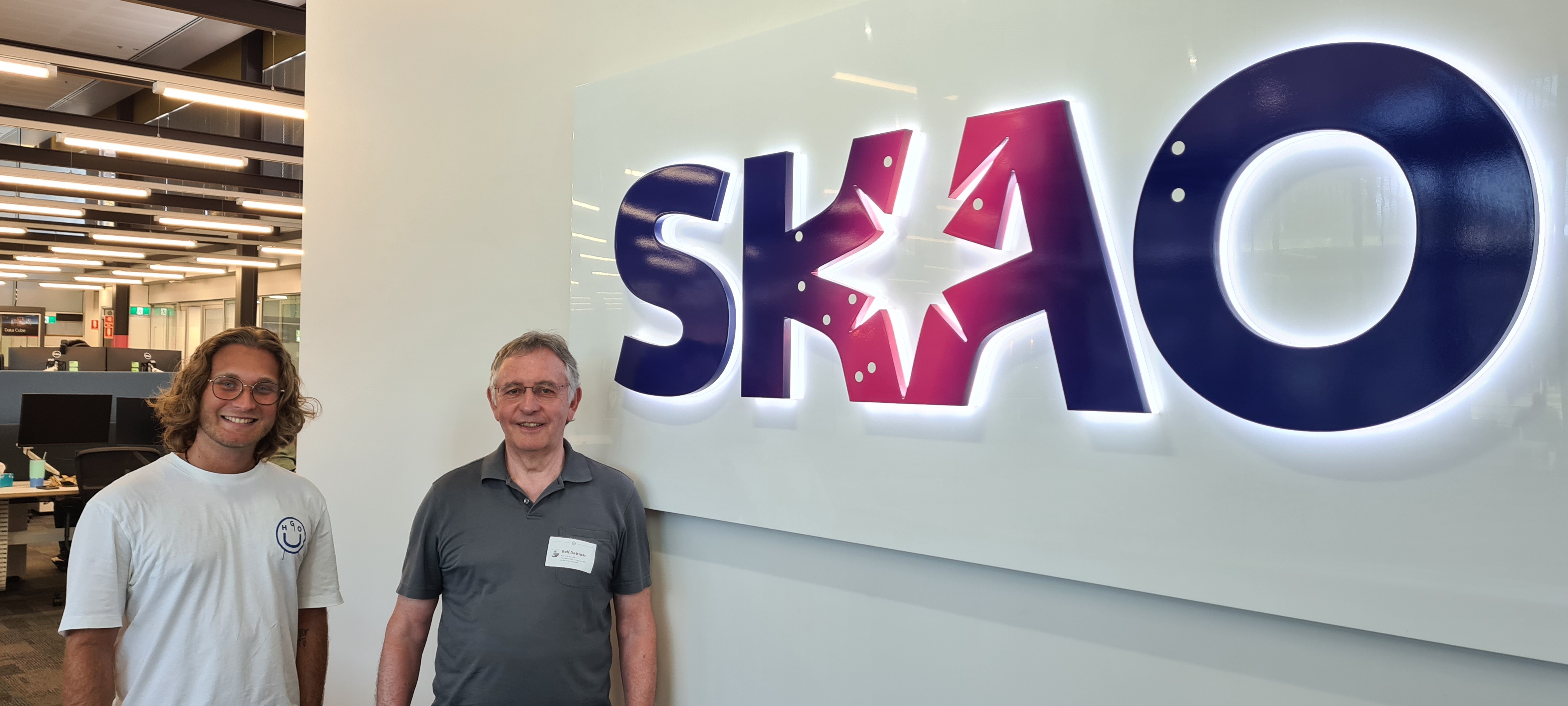
09.04.2025
As part of his PhD project, Sam Taziaux spent two months at the renowned CSIRO Institute in Perth, Australia. There he worked closely with George Heald, head of the SKAO headquarters in Perth, and Alec Thomson, both internationally recognised experts in the field of radio astronomy and the analysis of magnetic fields.
Sam's research project, which is part of A2, is dedicated to analysing cosmic ray transport and magnetic fields in dwarf galaxies. At CSIRO, he was able to benefit from the exceptional expertise there and was able to significantly improve the data reduction and analysis of his observed ATCA and MeerKAT data.
The stay was not only a great professional enhancement for Sam, but also a significant milestone in his scientific career, as he was able to get to know and work with the people from the CSIRO and SKAO. He was also able to establish contacts with the scientist at Curtin University in Perth to exchange ideas and expand his network.
Such research stays are excellent opportunities enabled by the CRC to specifically promote international cooperation. The CRC has thus opened up a unique opportunity to become involved in a global scientific network at an early stage, an invaluable advantage on the path to scientific independence.
Picture: Sam Taziaux and his supervisor Ralf-Jürgen Dettmar at the SKAO regional center at CSIRO, Perth.